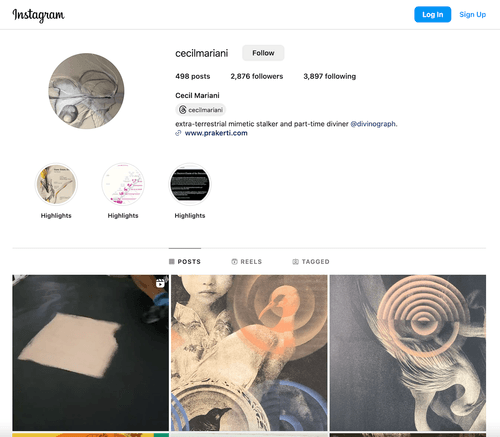
Cecil Mariani, a Jakarta-based artist and designer, thoughtfully and introspectively navigates the complexities of the art world. Her journey, marked by a deep engagement with Indonesian culture and a commitment to exploring alternative forms of artistic expression, has led her to create works that challenge conventional notions of art and its role in society.
With a background in Visual Communication Design from Jakarta and a Master’s degree in Design from the School of Visual Arts in New York, Cecil has a strong foundation in design principles. However, her artistic practice extends beyond the commercial realm, delving into personal explorations of identity, emotion, and the often-unseen labour that underpins the art world.
Cecil’s parents encouraged her early forays into art by enrolling her in various children’s art competitions. These experiences exposed her to a diverse community of artists and sparked a lifelong passion for creative expression. While her professional career has primarily focused on design, she has always maintained a personal connection to more traditional art forms, particularly drawing and painting.
‘I don’t know if I consider design a form of art,’ she muses, ‘but I’ve worked in design for many years.’ This tension between the commercial demands of design and the personal expression of art is a recurring theme in her work, as she seeks to bridge the gap between these two worlds.
Cecil’s choice of mediums reflects her evolving artistic journey. She initially gravitated towards charcoal, drawn to its raw and immediate qualities. ‘I became interested in more hands-on art forms at some point,’ she explains, ‘so I started using charcoal because it feels straightforward, raw, and bare.’ This preference for simplicity and directness is evident in her early works, which often feature bold lines and stark contrasts.
However, her recent explorations have led her to experiment with new materials and techniques, including object and pigment ink. This shift reflects a growing desire to push the boundaries of her practice and embrace a more intuitive approach to art-making. ‘Usually, I’m very meticulous about planning everything out,’ she says. ‘But when it comes to art, I can follow where the mediums want to take me. That’s what’s very liberating about it and healing.’
Cecil’s Indonesian heritage plays a significant role in her artistic vision. She recognises culture's profound influence on personal expression and artistic creation. ‘Our different lived cultures affect how we express ourselves in arts and language,’ she observes. This awareness informs her work, which often explores themes of identity, community, and the complexities of navigating different cultural contexts.
Her participation in the Jakarta Biennale, where she collaborated with Anggraeni Widhiasih on an installation that highlighted the often invisible labour of art workers, exemplifies her commitment to social engagement and her desire to use art as a platform for dialogue and reflection. The installation, which featured folded papers containing anonymous reflections from art workers, shed light on the challenges and aspirations of those who work behind the scenes in the art world.
—
Want to learn more about Cecil's artistic journey, her reflections on alternative education, and her exploration of the relationship between art and reality? Read the full interview in GROUNDING, the 4th volume of INTERLUNAR's zine.